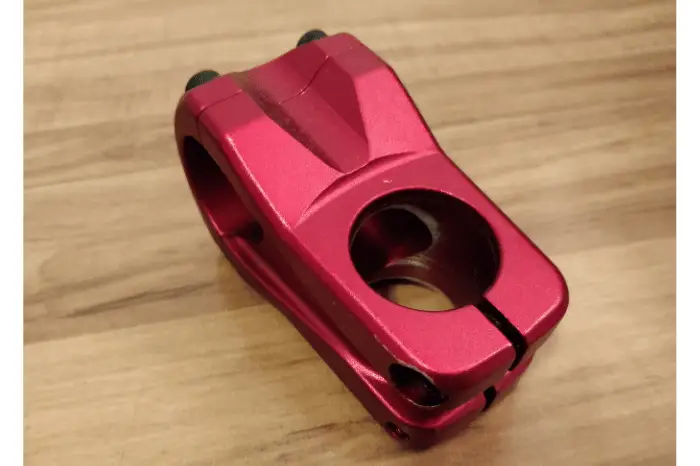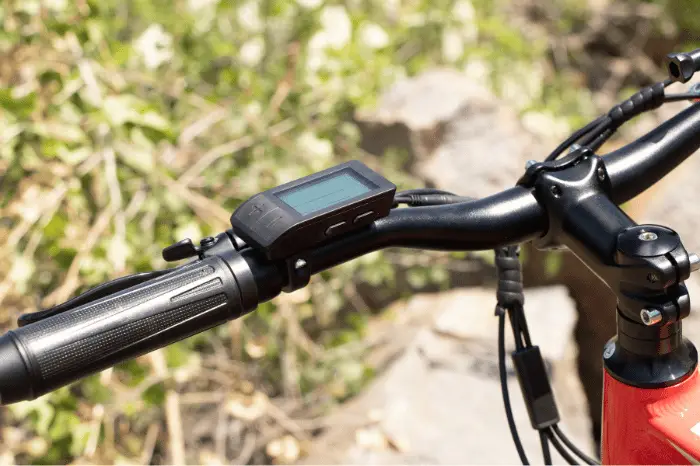
Mountain biking is a thrilling and challenging sport that demands a lot of physical and mental strength. One of the essential components of a mountain bike that can affect your ride is the stem.
The stem is the part of the bike that connects the handlebars to the steerer tube of the fork. The stem length is a crucial factor that can impact your bike’s handling, stability, and overall performance. In this article, we will explore the importance of stem length in mountain biking and how it affects your ride.
Stem length is a critical factor in determining the rider’s fit and comfort on a mountain bike. A stem that is too long or too short can cause discomfort, pain, or even injury to the rider. The right stem length will ensure that the rider is in a comfortable and safe position on the bike, which can improve their performance and enjoyment.
Additionally, the stem length can affect the bike’s handling and stability, especially when it comes to steering and balance. In the next section, we will discuss how stem length affects bike handling and performance.
Key Takeaways
- Stem length is a crucial factor that can impact your mountain bike’s handling, stability, and overall performance.
- The right stem length ensures that the rider is in a comfortable and safe position on the bike, which can improve their performance and enjoyment.
- Stem length affects the bike’s handling and stability, especially when it comes to steering and balance.
Importance of Stem Length in Mountain Biking
When it comes to mountain biking, the stem length of your bike plays a significant role in how your bike handles. The stem is the component that connects the handlebars to the fork steerer, and it determines the position of the handlebars to the front wheel.
The stem length affects the handling of your bike in several ways. A shorter stem will make your bike more responsive, allowing you to turn and maneuver more quickly. On the other hand, a longer stem will make your bike more stable, making it easier to climb and descend steep hills.
Finding the right stem length for your mountain bike is essential for achieving optimal performance. The best stem length for your bike will depend on several factors, including your riding style, the terrain you ride on, and your personal preferences.
Shorter stems are generally preferred by downhill riders, as they allow for quicker handling and more precise control, which is essential when navigating steep and technical terrain. Cross-country riders, on the other hand, tend to prefer longer stems, as they provide better climbing performance and stability on rough terrain.
How Stem Length Affects Bike Handling
When it comes to mountain biking, the stem length is an important factor that can affect the handling of your bike. In this section, we will discuss how stem length affects bike handling and what you should consider when choosing a stem length for your mountain bike.
Short Stems versus Long Stems
Shorter stems allow for quicker turning of the wheel, which can enhance the bike’s handling characteristics and feel. According to Mountain Treads, “shorter stems allow a rider to more quickly turn the wheel, enhancing the bike’s handling characteristics and feel.” This is because shorter stems reduce the distance between the handlebars and the front wheel, which makes it easier to maneuver the bike around tight corners and obstacles.
On the other hand, longer stems provide more stability and a more upright riding position. According to Going Fit Unfit, “a longer stem is more like a boat’s tiller.” This is because longer stems increase the distance between the handlebars and the front wheel, which makes it more difficult to turn the bike quickly but provides more stability when riding at high speeds.
Stem Length and Steering Dynamics
The stem length also affects the steering dynamics of your bike. When you turn the handlebars, the front wheel pivots around the steering axis, which is where the stem connects to the fork. The longer the stem, the more leverage you have over the front wheel, which makes it easier to turn the bike.
However, this also means that the bike will be more sensitive to small movements of the handlebars, which can make it harder to maintain a straight line.
Conversely, a shorter stem provides less leverage over the front wheel, which makes it harder to turn the bike but also makes it more stable when riding in a straight line.
According to DIY Mountain Bike, “downhill riders usually opt for the shorter end of the range (40-50mm), while enduro riders tend towards the middle to upper end of the range (50-80mm).”
Rider Fit and Comfort
When it comes to mountain biking, having a comfortable and efficient riding position is crucial. Stem length plays a significant role in achieving this optimal position.
Stem Length and Riding Position
The stem length determines how far your handlebars are from your body. A shorter stem will bring your handlebars closer to you, while a longer stem will push them further away. The ideal stem length for you depends on your body type, riding style, and the type of riding you do.
For example, if you have a shorter torso, a shorter stem may be more comfortable for you. On the other hand, if you have a longer torso, a longer stem may be more appropriate.
Also, if you ride more aggressively, a shorter stem may give you more control and stability.
Adjusting Stem Length for Optimal Fit
To achieve an optimal fit, you can adjust your stem length. This can be done by swapping out your current stem for one with a different length or by using spacers to adjust the height of your handlebars.
When adjusting your stem length, it’s essential to consider how it will affect your riding position. A shorter stem will bring your handlebars closer to you, which can make your bike feel more responsive and agile. However, it may also put more weight on your front wheel, which can affect your bike’s stability.
On the other hand, a longer stem will bring your handlebars further away from you, which can make your bike feel more stable and easier to control. However, it may also make your bike feel less responsive and agile.
Performance Considerations
When it comes to mountain biking, stem length can play a significant role in your performance. In this section, we will explore two key performance considerations related to stem length: climbing efficiency and downhill stability.
Stem Length and Climbing Efficiency
The stem length on your mountain bike can impact your climbing efficiency. A shorter stem length will position your body weight further forward, which can help you maintain traction on steep climbs. On the other hand, a longer stem length can make it more challenging to maintain traction and can cause your front wheel to lift during steep climbs.
According to Mountain Treads, the best average stem length for modern mountain bikes falls between 50 mm and 80 mm. Cross-country riders generally prefer longer stems for their superior climbing performance, while downhill riders often prefer shorter stems for quicker handling.
Stem Length and Downhill Stability
The stem length on your mountain bike can also impact your downhill stability. A shorter stem length can make your bike feel more responsive and easier to handle on descents. However, a longer stem length can provide more stability at high speeds, making it easier to maintain control of your bike.
As Shred Trail notes, there has been a trend towards increasingly short stems on many types of mountain bikes over the years as bike geometry and design has evolved.
However, it’s worth noting that stem length is just one factor that can impact your downhill stability, and other factors such as suspension setup, tire pressure, and body position also play a significant role.
Overall, finding the right stem length for your mountain bike is a matter of personal preference and depends on your riding style, terrain, and other factors. Experimenting with different stem lengths can help you find the right balance between climbing efficiency and downhill stability.
Customizing Your Mountain Bike

Customizing your mountain bike is a great way to improve your riding experience. One of the most important components to consider when customizing your bike is the stem.
The stem is the component that connects the handlebars to the fork steerer tube and plays a vital role in determining the fit and handling of your bike. In this section, we will discuss how to choose the right stem for your riding style and when to replace or upgrade your stem.
Choosing the Right Stem for Your Riding Style

When it comes to choosing the right stem for your mountain bike, there are a few factors to consider. The most important factor is your riding style. Are you a cross-country rider, a downhill rider, or an all-mountain rider? Each riding style requires a different stem length and angle to optimize the handling of the bike.
For cross-country riders, a longer stem with a more upright angle is ideal. This setup allows for a more aerodynamic riding position and better power transfer.
Downhill riders, on the other hand, prefer a shorter stem with a more aggressive angle. This setup allows for better control and stability at high speeds. All-mountain riders typically prefer a stem length and angle that falls somewhere in between cross-country and downhill setups.
When to Replace or Upgrade Your Stem
Stems are durable components that can last for many years, but they can also wear out over time or become outdated as new technologies emerge. If you notice any signs of wear or damage on your stem, such as cracks or rust, it’s time to replace it.
Additionally, if you’re experiencing discomfort or handling issues while riding, it may be time to upgrade your stem to a more suitable length or angle.
When upgrading your stem, it’s important to choose a stem that is compatible with your bike’s fork steerer tube diameter and handlebar clamp diameter. You may also want to consider the material and weight of the stem, as well as any additional features such as adjustable angles or vibration dampening.
By choosing the right stem for your riding style and knowing when to replace or upgrade your stem, you can optimize the fit and handling of your mountain bike and enhance your riding experience.
Installation and Maintenance Tips
Proper Stem Installation
Installing a stem is a relatively simple process, but it is essential to ensure it is done correctly. Here are some tips to keep in mind when installing your mountain bike stem:
- Make sure you have the correct stem size for your bike. The stem’s diameter should match the diameter of the fork steerer tube.
- Clean the fork steerer tube and the inside of the stem before installation.
- Apply a thin layer of grease to the fork steerer tube before installing the stem. This will help prevent corrosion and make it easier to remove the stem in the future.
- Tighten the stem bolts evenly and in a criss-cross pattern to ensure the stem is properly aligned with the fork steerer tube.
Routine Stem Checks and Maintenance
It is important to regularly check your stem for any signs of wear or damage. Here are some tips to keep your stem in good condition:
- Check the stem bolts regularly to ensure they are tight. Loose bolts can cause the stem to slip, which can be dangerous.
- Check the stem for any signs of cracking or damage. If you notice any damage, replace the stem immediately.
- Clean the stem regularly to prevent dirt and debris from accumulating. Use a soft brush or cloth to gently clean the stem and bolts.
- Check the stem’s alignment with the fork steerer tube. If the stem is misaligned, it can affect the bike’s handling and cause discomfort for the rider.
By following these installation and maintenance tips, you can ensure your mountain bike stem is properly installed and maintained, which can help improve your bike’s handling and keep you safe on the trails.
